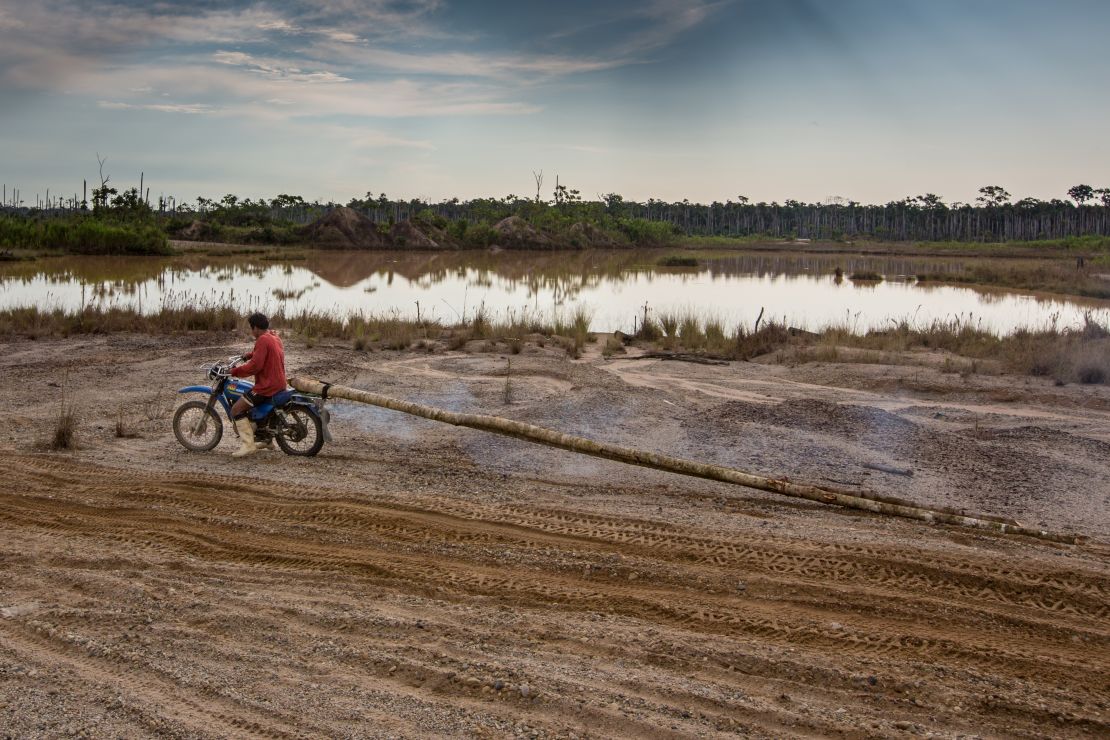The Southern Peruvian Amazon is considered one of the most important cradles of biodiversity left on Earth.
And as modern civilization seeps into even the most remote corners of the globe, the region is also home to some of the last “uncontacted” peoples left on the planet.
But its soils also contain traces of valuable gold, and a new analysis of satellite imagery shows that a rush to claim these riches poses grave threats to this pristine rainforest and its inhabitants.

Gold mining deforestation destroyed an estimated 22,930 acres of Peru’s Amazon in 2018, according to the group Monitoring of the Andean Amazon Project, known as MAAP. That’s the highest annual total on record dating back to 1985, based on research conducted by Wake Forest University’s Center for Amazonian Scientific Innovation, or CINCIA.
Deforestation in 2018 eclipsed the previous record high from 2017, when an estimated 22,635 acres of forest were felled by gold miners, according to MAAP.
This means that over two years, gold mining decimated the equivalent of more than 34,000 American football fields of the Peruvian Amazon rainforest, according to MAAP’s analysis. That’s an area nearly the size of the city of Cleveland.
“If we look at the biodiversity value of the region’s air and water quality, fauna and flora, and just forest coverage in terms of carbon emissions or sequestration, I think we’re looking at a real gem with all the services that a place like this provides to the planet,” said Daniela Pogliani, the executive director of the Peruvian nongovernmental organization Conservación Amazónica, which partnered with its Washington-based sister organization Amazon Conservation on the MAAP study. “[The deforestation] was expected in a way, but it’s concerning to see the numbers showing that the trends are not decreasing.”
Most of the gold mining is being done illegally in protected areas in and around the region known as Madre de Dios, according to Luis Fernandez, the executive director of CINCIA. But the damage caused by mining isn’t limited to rainforest destruction.

To reach the gold, miners must clear the land of trees, and then using pumps and high-powered hoses, they blast away river banks, turning the soil into a pale, brown slurry.
But there are no massive gold deposits here, just tiny flecks of gold scattered in the sediment, which can only be captured by using massive amounts of mercury.
“[The mercury contamination] is kind of the invisible cost of this mining,” Fernandez said. “You can see where the forests have disappeared, but you can’t see where the mercury is and where it’s going into the rivers and lakes of the region.”
Fernandez said his research teams have studied mercury levels in people and the environment near the mining zones, and have found high levels “across the board.”
Exposure to mercury can damage the nervous, immune and digestive systems, and can even be fatal. Developing fetuses are particularly vulnerable to the effects of mercury, according to the World Health Organization.
But the full extent of the impacts on the people, plants and animals that live on this contaminated land may not be known for years.
Exactly what’s driving the current uptick in mining is complicated. So is stopping the activity.
According to Fernandez, a confluence of factors have created a perfect storm – from the rising price of gold in global markets to the opening of a modern highway that has made this isolated region more accessible.

But entrenched poverty and a lack of job opportunities also play a major role.
Despite the health risks and the fact that most of the mining is illegal, the potential payoff is irresistible to many.
“It’s quick money. It’s not something where you farm and then you have to wait six months to harvest the crops,” Fernandez said. “You extract the gold from the soil at the bottom of rivers and lakes and then you have cash in your hand at the end of the night.”
Government enforcement efforts also appear to be having little impact on stopping the mining activity. Research conducted by CINCIA shows that between 2009 and 2017, mining deforestation increased by 240%, despite a crackdown by the Peruvian National Police conducted during the same period.
“We acknowledge that the government of Peru has been trying really hard, but the hard data shows that these efforts have not produced consistent results,” Pogliani said. “But it shouldn’t be seen as an environmental problem only. It should be seen as a health issue and a human rights issue, and be dealt with accordingly.”





















